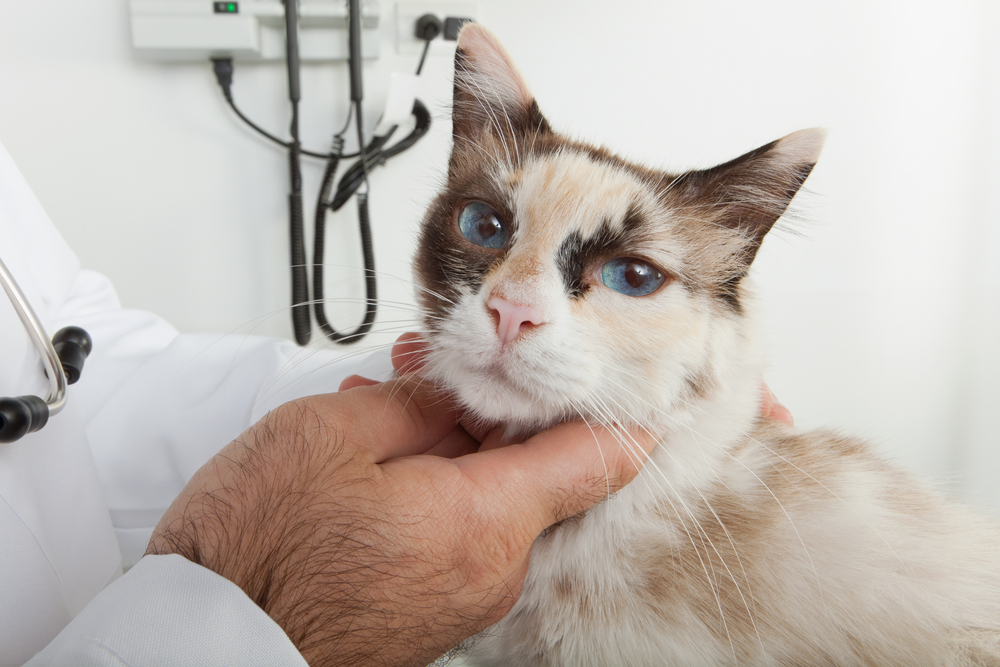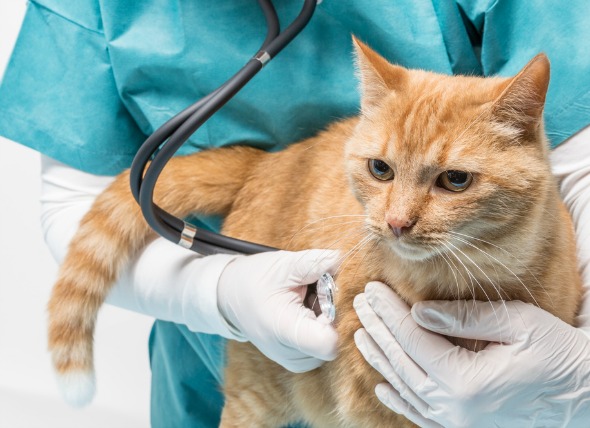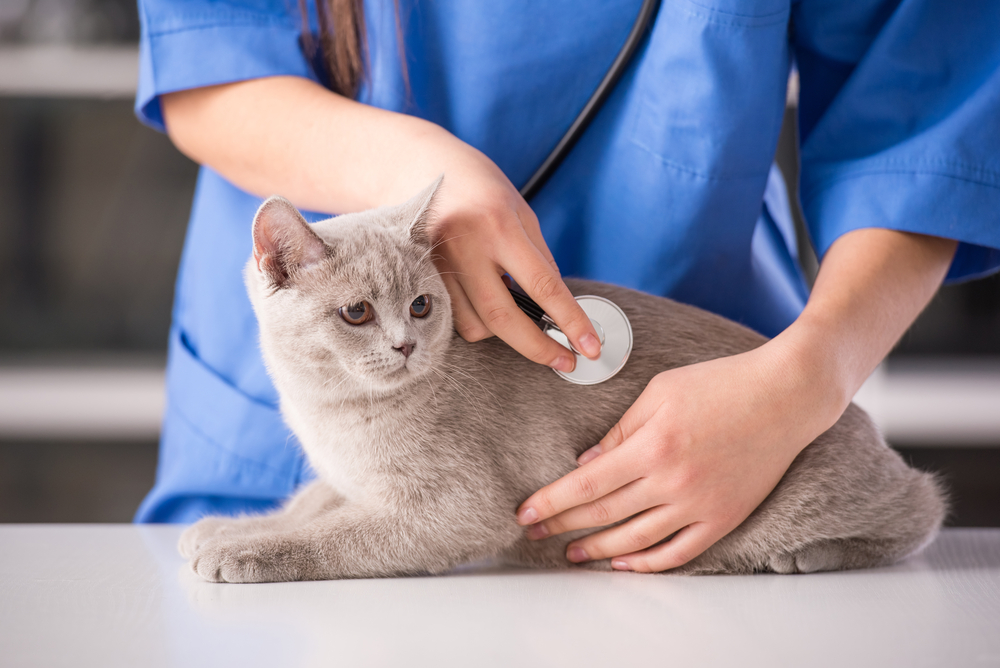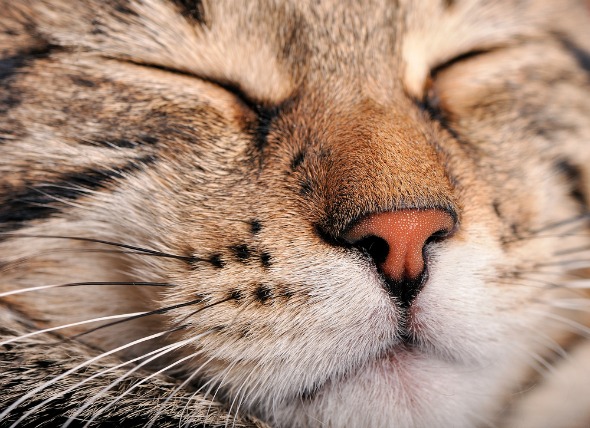

Nose cancer (or nasal adenocarcinoma) occurs when too many cells in a cat's nasal and sinus passages come together. The disease progresses slowly. Studies have shown nose cancer is more common in larger animal breeds than in smaller ones, and it may be more common in males than females. Options exist when the disease is caught early and aggressively treated.
A pollutant-filled environment is one of the known causes of nose cancer, but exact causes are otherwise largely unknown.
Veterinarians may utilize a variety of tools to detect nose cancer. A microscopic camera placed in the nose (rhinoscopy) can be used to look into the nasal cavity, although it may not be effective if blood or masses are obstructing the view. A tissue sample (biopsy) will be done for a definitive diagnosis. A diagnosis can also be made if bacterial cultures come back positive. Material from the lymph nodes are sometimes examined to see if the disease has spread (metastasized) into other parts of a cat's body.
While surgery may be used to remove a tumor, it is not effective as a treatment option on its own. Radiation therapy (radiotherapy), when combined with surgery, has shown positive results for some animals. In some cases, chemotherapy is also prescribed.
If the nose cancer is not treated, the median survival time is between three and five months. When radiotherapy is used, the survival rate percentages range from 20 to 49 percent for the first two years after the treatments. It is best to follow the prescribed treatment plan to ensure the best possible outcome for your cat.
There is currently no way to prevent nose cancer.
Image: La India Piaroa via Shutterstock
 Noisy Breathing in Cats
Stertor and Stridor in Cats
Stertor is noisy brea
Noisy Breathing in Cats
Stertor and Stridor in Cats
Stertor is noisy brea
 Why Do Cats Spray Indoors?
Why Do Cats Spray Indoors?
Why Do Cats
Why Do Cats Spray Indoors?
Why Do Cats Spray Indoors?
Why Do Cats
 Kidney Failure and Excess Urea in the Urine in Cats
Renal Failure and Acute Uremia in Cats
The sudden
Kidney Failure and Excess Urea in the Urine in Cats
Renal Failure and Acute Uremia in Cats
The sudden
 Head Tilt, Disorientation in Cats
Idiopathic Vestibular Disease in Cats
Head tilt i
Head Tilt, Disorientation in Cats
Idiopathic Vestibular Disease in Cats
Head tilt i
 Nose Bleed in Cats
Epistaxis in Cats
A bleeding nose can be the resu
Nose Bleed in Cats
Epistaxis in Cats
A bleeding nose can be the resu
Copyright © 2005-2016 Pet Information All Rights Reserved
Contact us: www162date@outlook.com